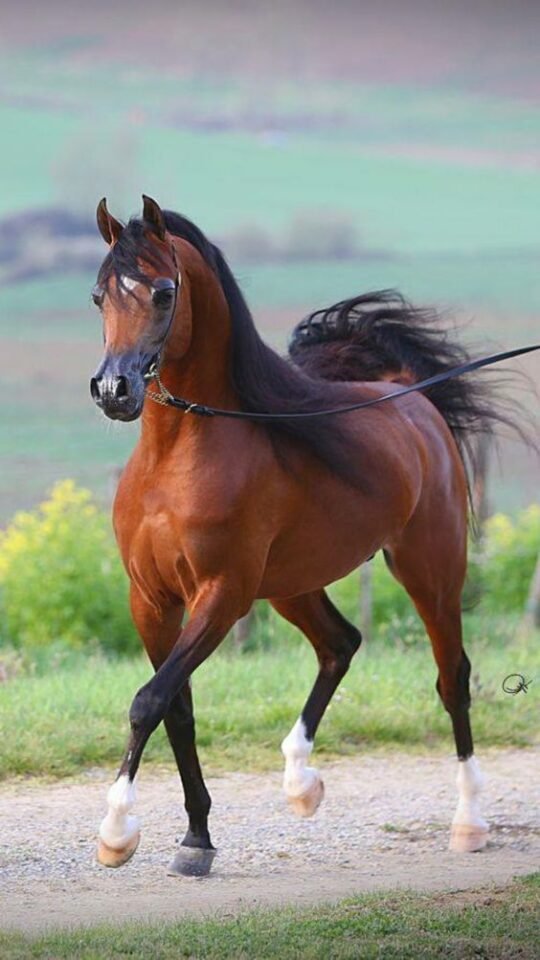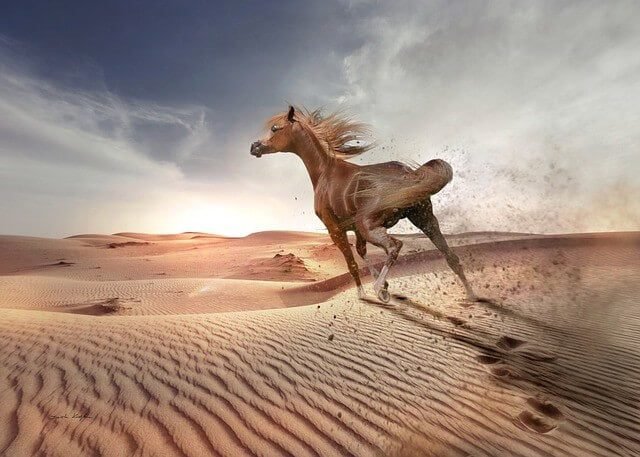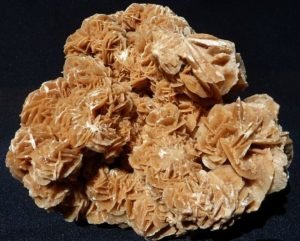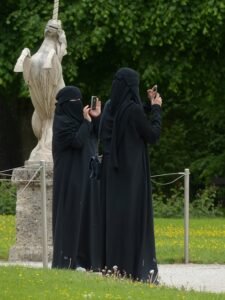Ancient lineages: The purebred Arabian horses imported to England by Lady Ann Blunt became known as “Crabbet Arabs” after the name of their farm, “Crabbet Park.” In the United States, horses were associated with individuals or farms that bred them, explaining why enthusiasts refer to bloodlines such as “Babson,” “Davenport,” and “Kellogg.”
Egyptian Arabian horses are only those whose fathers and mothers descend from a special group of horses used in the Egyptian breeding program of the Arabian breed. Sometimes, a horse bred in one country but acquired by another, either through sale or war spoils, takes a name that refers to the nationality of its adopted country and the essence of this beautiful and captivating breed.
How many types of Arabian horses exist?
There are various ways to categorize the different varieties of Arabian horses, leading to various lists that include families, lines, and sub-lines. Some of the most recurrent classifications include three typologies identified by Bedouin tribes:
- Kuhailan
- Siglavy
- Hamdani
The five fundamental families of the breed are:
- Kehilan
- Seglawi
- Abeyan
- Hamdani
- Hadban
As well as the more than two hundred and forty lines, sub-lines, and families that have evolved from the unique trunk of Kuhaylan-type Arabs. It is also possible to differentiate them by the country of origin, including Egyptian, Russian, Polish, and Spanish.

Conformation of the Arabian Horse and Our Breed Standard
The majestic purebred Arabian horses are astonishing! The most identifiable features of an Arabian horse are its finely chiseled head, flat face, long arched neck, and high-carried tail. Their entire appearance radiates energy, intelligence, courage, and nobility. Every time an Arabian horse moves in its famous “floating trot,” it announces to the world its proud and graceful nature.
In general, Arabian horses have a short, straight back (usually one vertebra less than common in other breeds), perfect balance, and symmetry. A deep chest, well-arched ribs, strong legs of thick density, and a more horizontal position of the pelvic bone characterize them.
The qualities of the purebred Arabian horse
Five key elements that distinguish the Arabian horse type:
- Head: The Arabian horse should have a comparatively small head, with a straight or slightly concave profile below the eyes. The muzzle should be small, with large and extended nostrils during action. The eyes should be large, round, expressive, dark, and well-set apart. The distance between the eye and the muzzle should be short, and the jaws should be deep and wide between the branches. The ears should be small, smaller in stallions than in mares, thin, well-formed, with tips curved slightly inward.
- Neck: It should have a long and arched neck, positioned high, and function well on a moderately high withers.
- Back: The back should be short.
- Croup: The croup should be comparatively horizontal.
- Tail: The horse should have a naturally high-set tail carriage. When viewed from behind, the tail should be carried straight.
If a horse possesses these qualities and proper conformation, it is considered to meet the ideal standard of the purebred Arabian horse.

History and Heritage of the Arabian Horse
Unparalleled beauty, a rich history, and a unique ability to connect with their owners. For thousands of years, Arabian horses lived among the tribes of the Arabian Peninsula’s desert, bred by the Bedouins as warfare evolved for long walks and swift raids into enemy fields. In these harsh desert conditions, the Arabian horse evolved with its great lung capacity and incredible endurance.
Historical figures like Genghis Khan, Napoleon, Alexander the Great, and George Washington rode Arabian horses. Even today, descendants of the ancient Arabian horses can be found. Thus, a man’s wealth was measured by his possessions of these fine animals.
Since the Arabian horse was the original source of quality and speed and remains the most significant in the fields of endurance and solidity, it directly or indirectly contributed to the formation of practically all modern horse breeds. In the 7th century AD, Prophet Muhammad was instrumental in spreading the influence of Arabs worldwide.
He instructed his followers to care for Arabian horses and treat them with kindness. He said special attention should be given to mares, as they ensure the continuity of the breed. He also proclaimed that Allah had created the Arabian horse and that those who treated the horse well would be rewarded in the afterlife.

The severe climate required nomads to share food and water, and sometimes even their tents, with their horses.
As a result, Arabian horses developed a close affinity with humans and high intelligence. Over the centuries, Bedouin tribes jealously maintained the purity of the breed. Due to their limited resources, breeding practices were extremely selective.
Such practices, which eventually helped the Arabian horse become a prized possession worldwide, have led to the beautiful athletic breed we know today, marked by a distinctive dish face profile; large, bright eyes well-placed on a broad forehead; small, curved ears; and large, efficient nostrils.
Even today, the purebred Arabian horse is virtually the same as the one ridden in ancient Arabia. Arabian horses now showcase their athletic talents in a variety of disciplines from English to Western, with the Arabian positioned as the undisputed champion of endurance events.
If you’re looking for a companion that will be your adventure or competition partner and a lifelong friend, then an Arabian horse may be the horse for you.
The Versatile Arabian Horses
Traits introduced in ancient Arabia created a versatile horse that is not only a beautiful breed but also excels in many activities. Considered the best breed for distances, the superior endurance and resilience of the Arabian allow it to consistently win competitive and endurance races.
The most popular activity among all horse owners is recreational riding, and the Arabian horse is no exception. The loyal and willing nature of the Arabian breed makes it the perfect family horse.
Its affectionate personality also makes it a great horse for children. In the show ring, the Arabian excels in English and Western pleasure competition. The Arabian is well-known for its balance and agility.
Combined with its great intelligence and skillful footwork, it is more than capable of driving and controlling events. For speed, agility, and grace, you’ll want an Arabian.
Arabians compete in over 400 shows for all Arabians, as well as in numerous open shows in the United States and Canada. The Arabian, as the original racehorse, is becoming increasingly popular competing on racetracks across the country.

Arabian race distances are similar to Thoroughbred races, with over 700 races of all Arabian breeds held annually in the United States. Although the most beautiful of all riding breeds, the Arabian is not just a pretty horse. It is a family horse, a show horse, a competitive sport horse, and a working horse.
STATUTES OF THE ARABIAN HORSE ASSOCIATION: AHAHANDBOOK
How many years can an Arabian horse live?
The life expectancy of these specimens ranges between 25 and 30 years, showing a slight inclination towards greater longevity compared to many other equine breeds. With proper care, it is plausible for them to reach and even surpass 30 years of age.
What is the value of a purebred Arabian horse?
The price of purebred Arabian horses can experience notable variations, depending on factors such as their lineage, quality, and level of training. It is possible to find specimens with prices ranging from 3,000 to 5,000 euros. However, there are also those considerably more expensive, exceeding 100,000 euros, especially if they have an exceptional lineage or have demonstrated outstanding skills in racing, exhibitions, or jumping.
We are here to help you. What we offer:
- Interactive classes: Our classes are dynamic and participatory. You will learn in a fun and effective way.
- Native teachers: We have native Arabic instructors who will guide you through every step of the learning process.
- Flexibility: You will be able to study from the comfort of your home and adjust your schedule according to your availability.



